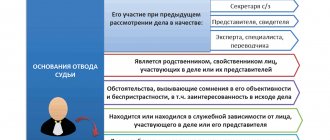The first justices of the peace in the Russian Empire appeared as a result of judicial reform under Alexander II. This institute was created to consider minor criminal and civil cases, with claims not exceeding 500 rubles. Justices of the peace were not appointed, but elected. It is interesting that the priority was not their education, but personal and human qualities, respect by the population, and authority in society. A fairly simple and accessible procedure for considering cases was created.
Justices of the peace were supposed to be as close to the people as possible. Unlike other courts, the magistrate had to respond not only to written statements and complaints, but also to oral ones, and could consider cases directly at the scene of the incident.
All formalities were kept to a minimum, no fees or stamp papers were paid. Solutions were simply written down in a book specially designed for this purpose. World justice existed in this form for 25 years and was abolished.
Subsequently, there were short-term attempts to revive it. Until finally, on December 17, 1998, the Federal Law “On Magistrates in the Russian Federation” was adopted, which to this day regulates the activities of magistrates’ courts.
Magistrates' courts are the first lower courts in the system of courts of general jurisdiction. The justice of the peace considers cases submitted to him only individually.
Legislative regulation
In the Russian Federation there is a federal law “On Justices of the Peace”. A similar law has been adopted in the regions of the country. Local acts repeat the provisions of federal law. The differences relate to the procedure for appointing and organizing the activities of judges.
Magistrates are subject to the law “On the Judicial System” and “On the Status of Judges”.
In order to ensure their activities, a number of normative acts - instructions, regulations - were adopted. In particular, instructions on the organization of office work.
Procedural codes (Civil Procedure Code, Arbitration Procedure Code, CAS AND Code of Criminal Procedure) answer the question of what magistrates do.
Justices of the peace in Russia
World justice in Russia History of world justice in Russia
Until the XYIII century. There were no special judicial institutions in Russia. The powers to administer justice were vested in the heads of administrative-territorial entities. Naturally, such a situation led to various kinds of abuses, and already at the end of the XYII - beginning of the XYIII centuries. The need for a radical change in the judicial system in Russia became obvious. Peter I was the first to make such an attempt.
The next step in the development of the judicial system were the reforms of Catherine II. Promulgated in 1775
Part 1 of “Institutions for the Administration of the Russian Empire,” which proclaimed the creation of an independent branch of the judiciary based on the principles of collegiality.
The judicial system created by Catherine II lasted almost 100 years, undergoing various changes.
By the second half of the 19th century. The need for a radical reform of the judicial system became obvious in accordance with generally accepted principles of organizing legal proceedings: universality, transparency, ensuring the right to defense, etc., which was carried out within the framework of the general liberal reforms carried out by Alexander II.
On November 20, 1864, the “Judicial Statutes” were promulgated, which organized the judiciary in a new way. In particular, new courts of the peace were introduced into the judicial system.
World justice was as close as possible to the population, a separate closed system, built on the principles of election, class, independence and irremovability of judges within the limits of the election term, publicity and competition.
The magistrate was the first instance for considering minor criminal (up to 1 year of imprisonment) and civil (with a claim price of up to 500 rubles) cases.
The district magistrate was elected for a period of 3 years by the district zemstvo assembly from among citizens who have reached the age of 25, who have higher or secondary education or work experience of at least 3 years, primarily in the judicial department, who own land of at least 400 dessiatines, real estate assessed for levying a tax of 6 thousand rubles. in other cities. Lists of candidates for justices of the peace were compiled by the local leader of the nobility and approved by the governor. Elected justices of the peace were confirmed by the Senate.
The right to be elected to the position of justices of the peace was recognized for people from all segments of the population.
District justices of the peace received a salary and could not combine any other state or public service with this position.
At the same time as precinct judges, the positions of honorary magistrates were established, who, at the request of the parties or due to the absence of precinct magistrates, considered cases under their jurisdiction. Honorary justices of the peace were elected in the same manner as district judges, but did not receive a salary and performed their duties if necessary.
The cassation and appeal authority in relation to single justices of the peace was the district congress of justices of the peace, which included all justices of the peace of a certain district, including honorary justices of the peace. The Congress of Justices of the Peace elected a chairman from among its members for a term of three years. An assistant prosecutor participated in the meetings of the congress of magistrates, who gave his opinions on specific cases.
Thanks to justice of the peace, which existed separately from general judicial institutions, minor criminal and civil cases did not move endlessly from one court to another.
The qualification requirements for holding the position of a justice of the peace are at least 25 years of age, higher or secondary education or three years of work experience in positions where one could acquire practical skills in the production of court cases, ownership of land or other real estate, as well as the requirement of “innocence” (not be under investigation or trial, not be an insolvent debtor, etc.) - ensured the appropriate level of the judiciary at the lower level.
The fairly simple procedure for trial in a magistrate's court and the specificity of the sources of law that magistrates should be guided by did not require persons with a legal education to hold these positions. The personal qualities of the justice of the peace, his authority and respect in society were of paramount importance. He was charged with the duty of “accepting requests everywhere and at all times, and, in necessary cases, sorting out cases in the places where they arose.”
In civil proceedings, the magistrate had jurisdiction over:
- claims for personal obligations and contracts, claims for real estate with a price not exceeding 500 rubles;
- claims for compensation for damage and losses, when their amount did not exceed 500 rubles. or could not have been positively known at the time the claim was brought;
- claims for personal grievances and insults;
- claims for restoration of violated possession when no more than 6 months have passed since the violation.
The main task of the magistrate was to persuade the parties to reconcile and accept a settlement agreement. If it was impossible to reach a settlement agreement, the magistrate used his authority to make a decision or sentence in the case.
In order to make the lower level of the judicial system as accessible as possible to the general public, the legislator provided for a simplified nature of the procedure in the magistrate's court, where all formalities were reduced to a minimum. In civil proceedings, appealing to a magistrate did not require the payment of fees or the use of stamp paper; decisions were recorded in a book established by law. In criminal cases, the initiative to initiate a case, call witnesses, present evidence belonged to a private individual, sometimes this was done by the police. The judge was required to respond to both oral and written complaints. The minutes of the court session were drawn up in any form. If the case ended in a verdict, it was entered into the protocol. The parties were allowed to bring witnesses and present evidence to the appellate authority, which was the congress of magistrates. The congress either approved the decision or sentence of the magistrate, or, within the limits of the recall, decided a new one. Moreover, the punishment of the accused could not be increased without the request of the prosecutor.
Thus, the magistrate’s court ensured accessibility, simplicity, and speed of legal proceedings. It was a democratic institution not only in the way it was formed and the nature of consideration of cases, but also in the degree of proximity to the population.
Having existed in this form for 25 years, justices of the peace were abolished. The law of June 12, 1889 retained them only in the capitals and a few large cities. In the remaining cities, instead of elected justices of the peace, city judges were introduced, appointed and dismissed by the Minister of Justice. In the districts, judicial power passed to zemstvo chiefs, who were also ranks of the administrative department.
In 1912, a law was passed on the transformation of the local court, which abolished the judicial power of zemstvo chiefs, replacing them, as well as city judges, with justices of the peace elected by zemstvo assemblies, even with some expansion of the limits of their powers. Global justice was revived, but not for long.
The World Court was finally abolished along with the entire tsarist court system by the Decree on the Court of November 24, 1917.
And now, 80 years later, the world court is being revived.
On December 17, 1998, the Federal Law “On Justices of the Peace in the Russian Federation” was adopted, which revived the institution of justices of the peace in the country’s judicial system.
(based on materials from the “Handbook of the Justice of the Peace: Educational and methodological manual / Edited by Prof. V.M. Lebedev. - M.: BEK Publishing House, 2002.)
published: 08/24/2020 08:21:56, updated: 10/02/2020 16:51:59
Status Features
So, what do justices of the peace do? The same as their colleagues in other courts of the country, according to their competence: they accept cases for their proceedings and make decisions on them. Thanks to this, they have the same privileges as other judges in terms of immunity (a special procedure for bringing them to criminal and disciplinary liability).
The state provides additional guarantees in the form of the right to retire earlier than the majority of citizens. The salary of Themis's servants is significantly higher than that of many civil servants. True, the difference in the income of members of the judicial corporation is noticeable (80 thousand rubles, instead of 200 thousand rubles per month)
Of course, additional payments are provided for length of service, for qualification class, bonus payments, etc. Actually, this is the main thing that distinguishes a justice of the peace from an ordinary one.
Requirements for a candidate for the position
Personal qualities of a justice of the peace
Every person knows that all levels of justice need their judges.
They must work and maintain the framework of the law.
In addition, such judges help resolve conflict situations.
Like any other position, people are hired here according to certain requirements.
So, let's take a closer look at who exactly can work in such a position:
- The candidate must have a higher education in the legal field.
- He must not have a criminal record.
- A person with dual citizenship will not be accepted for this position. Here it is important to indicate the desire to work only in our country. Accordingly, it is necessary to prove this information.
- A capable person.
- No dependencies. A person registered in any clinic cannot hold such a position.
- The candidate for the position must not have any diseases that may interfere with work.
- There are age restrictions for these positions. Only a person over twenty-five years old can become one. The total work experience of the future justice of the peace must exceed 5 years.
- A candidate for a position who wants to work in this area must monitor his actions and actions so that in the future he does not have to make excuses for his behavior.
Before taking up the position, the candidate must know the relevant examinations and obtain a recommendation from the judicial authority. If a person has previously worked in a similar position, then these points are omitted. Based on current experience, exams are not passable.
Organization of activities
In the regions of the country there are departments to support the activities of justices of the peace. They resolve issues of their placement, staffing, remuneration and other tasks. This includes:
- organizing a competition for filling the positions of judges, accepting documents, and submitting them to the legislative assembly;
- search and maintenance of premises in which judges and their staff work;
- hiring secretaries and assistant judges, remuneration for their labor.
Some regions create a full-fledged department or department, while others transfer decisions on the activities of justices of the peace to judicial departments. These are organizations that perform similar tasks in relation to all other courts (both general and arbitration, regardless of the instance)
In Dagestan, for example, the judicial department is responsible for organizing the activities of all judges without exception, while in Sevastopol there is a full-fledged department for ensuring the activities of justices of the peace.
Funds for their activities are formally allocated from the regional budget. The remaining judges are directly financed from the federal budget.
What does the world court look like?
And what does the Leninist World Court look like? Some residents of the district of the same name in one of the cities of our country are probably asking a similar question. But the fact is that in the legislation there is no concept of a magistrate’s court. There are only justices of the peace.
Separate premises are allocated for them, and some can work directly in the building of the district court, the competence of which extends to them.
The territory served by judges is divided into sections. One site consists of several streets of a locality or city. The greatest load is observed in Moscow and St. Petersburg. The standard is 25 thousand people per site.
Information about which territories are included in the precincts is located on the website of the district or city court or on the page of the State Antimonopoly Service portal.
When approaching the building where the justice of the peace works, a citizen will see a sign with the precinct number. Therefore, concepts, for example, “Lenin’s magistrate’s court” and similar ones do not exist in legislation. It is used only in conversations with officials and lawyers. Claims and statements are addressed to the magistrate of the precinct number such and such.
What cases cannot be heard in the magistrate's court?
Of course, there are cases that are not considered by magistrates. These are issues that fall under the jurisdiction of other bodies of the judicial system. This includes claims with higher liability and claim amounts. In addition, they do not consider claims that require the participation of several people - judges or juries - that is, more complex from the point of view of psychological and legal assessment. Such cases include:
- property issues exceeding 50,000 rubles or 100,000 in cases of protecting the rights of buyers;
- criminal cases with a sentence of more than 3 years;
- some labor disputes (including reinstatement);
- issues of establishing or canceling paternity, maternity, adoption, guardianship, disputes about the residence of children;
- appeal and cassation considerations.
There are other courts for these claims. Over 100,000 civil cases are considered by district courts, criminal cases are also considered by the courts of the constituent entities of the Russian Federation, and special bodies have been allocated for arbitration issues.
Complex cases are heard in other courts
What cases are being considered?
What does a magistrate do? It would seem that the answer is simple. Judges at the district level have specialization. One group deals with criminal cases and consideration of materials under the Code of Administrative Offences. The second is the consideration of civil and administrative cases. Specialization is spreading further, for example, someone deals primarily with credit disputes, someone is well versed in matters affecting the interests of children, etc.
The competence of magistrates includes cases of all categories, another thing is that they are considered simple, their complexity lies more in the abundance of documents than in the disputes themselves.
What is a magistrate's court and what does it do?
This is a body in the judicial system that considers a number of categories of cases using a simplified procedure.
For example, if in a court of general jurisdiction 2 months are allotted for the consideration of a civil case, then the magistrate needs one month to make a decision.
The magistrate always considers cases individually. This is also one of the features of this type of legal proceedings. Otherwise, the course of the trial in the magistrate's court is subject to current legislation.
Addresses of court districts of justices of the peace in Moscow can be viewed on the Portal of a single information space https://mos-sud.ru.
Administrative disputes
The RF CAS provides for a single category of disputes for magistrates - consideration of applications for the issuance of a court order (collection of tax and other payments).
Thus, civil disputes include:
- claims for termination of marriage, collection of alimony, if there is no dispute about the place of residence of children, custody of them;
- a claim in a family case is transferred to the district court if the fact of maternity, paternity, deprivation or restriction of the right to a child, annulment of marriage, adoption is affected;
- division of property of divorced spouses, if its price does not exceed 50 thousand rubles;
- disputes about the right to property, valued at no more than 50 thousand, except for disputes about the right to inheritance, intellectual property;
- disputes regarding the use of property;
- applications for the issuance of a court order (collection of alimony, debt to pay for utilities).
If the claim makes claims, some of which must be considered by the district court, it is transferred to the district court. A change in jurisdiction during the consideration of a case entails the same consequences.
Thus, the job of magistrates is to enable district courts to deal with more complex disputes that are significant to citizens.
Procedure for filing an appeal to the magistrate's court
To apply to a court at this level, you must complete several steps:
- Pay the state fee. Persons who go to court to protect their rights on the following issues are exempt from paying it:
- consumer rights;
- requesting alimony;
- protection of children's rights;
- compensation for damage caused by a crime;
- as well as disabled people of groups 1 and 2, their associations, participants and disabled people of the Second World War, heroes of the USSR and the Russian Federation.
- Competently draw up a statement of claim. Indicate all the necessary information, the name and essence of the claim, requirements, provide evidence of the case.
- Attach the necessary documents and wait for the call regarding the claim.
Collection of alimony is one of the issues within the competence of the magistrate’s court
After filing a claim, a decision on it must be made within 10 days. This may be leaving the claim without progress, refusal to accept it, or a decision to consider the case by a magistrate, which must be carried out within a month from the date of filing the claim.
THIS IS INTERESTING! Issues regarding the issuance of a court order are considered by the court within 5 days and do not require the presence of the parties at the court hearing. This is especially important when it comes to seeking child support from a working parent. The procedure is very simple and does not require time or financial costs (there is no state duty).








